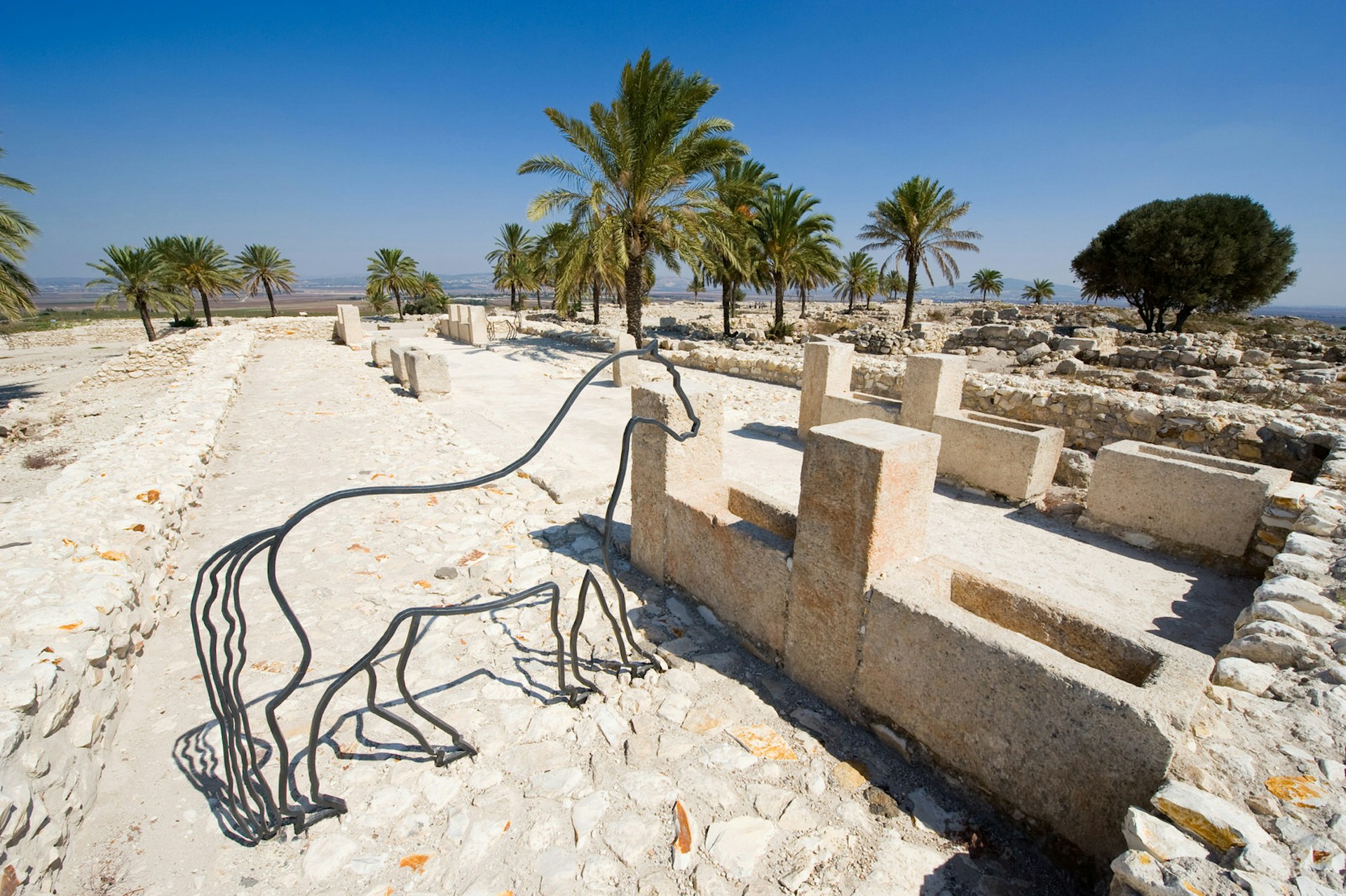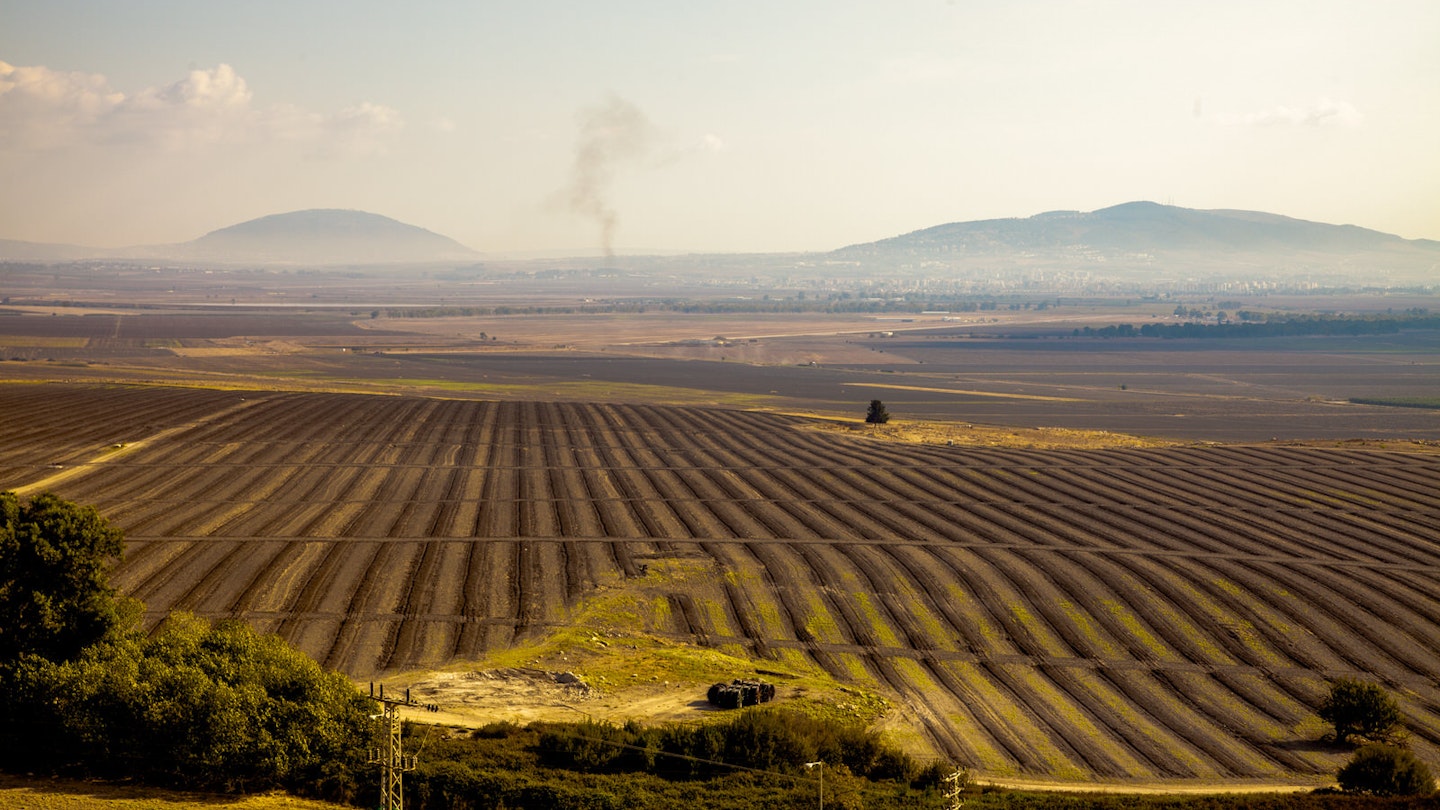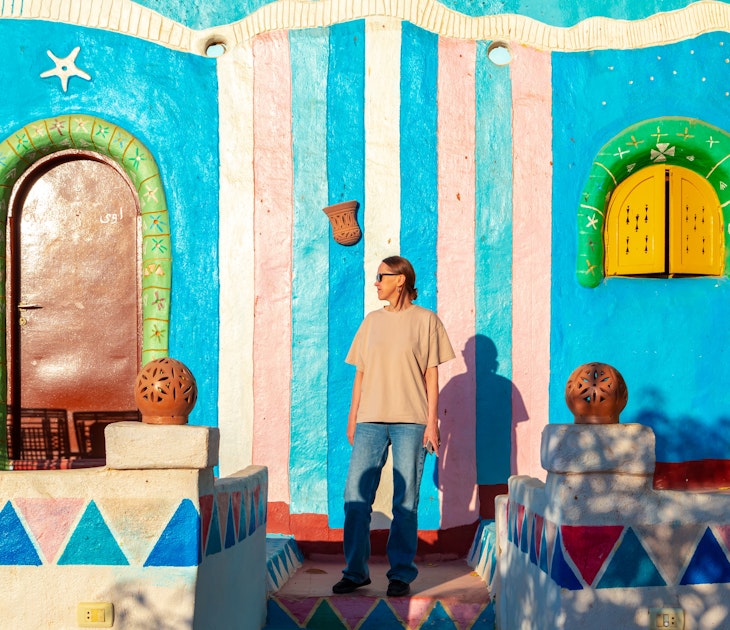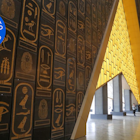I squint in the desert sun, scanning the horizon from Megiddo hill. So far, not a single harbinger of the apocalypse.
To believers, this northern Israeli national park is ground zero for the final battle between good and evil. But Megiddo also has a storied history that spans millennia – and the truth is even stranger than fire and brimstone.

Megiddo National Park spreads across a hill 37km southeast of Haifa. The New Testament’s Book of Revelation is interpreted as foretelling the ultimate reckoning on this very spot. Revelation 16 describes seven bowls of God’s wrath poured onto the earth – death in the seas, plagues of sores, rivers of blood – and a final gathering on the hill of Megiddo, called Har Megiddo in Hebrew, giving English speakers the word ‘Armageddon’.
Visitors touring present-day Megiddo, many of them on Bible-themed tours around the Holy Land, have arrived a little early for that final thunderstruck day. What they discover runs deeper than an apocalyptic X-marks-the-spot: Megiddo has the buried remains of 26 different civilisations. Though ‘Armageddon’ is now a by-word for a war still to come, countless bloody showdowns have already been waged here.

Megiddo’s highly desirable location has placed it in the sights of warring factions throughout history. Megiddo was the linchpin for one of the ancient world’s significant military and trade routes, the road from Egypt to Mesopotamia and Anatolia. Over thousands of years, a cycle of settling, building, battling and then rebuilding created a remarkable archaeological layer cake. The earliest settlements may date as far back as 7000 BCE, but archaeologists have unearthed remains of more than two dozen civilisations between 4000 BCE and 400 BCE, when Megiddo was suddenly abandoned.
Perched nonchalantly on millennia-old rocky rubble, stellion lizards size me up as I huff my way to the summit of Megiddo hill. The Jezreel Valley below is rich and green, but the hill’s parched earth has split into a spiderweb of cracks. A few scraggy date palms with leafy mohawks cast no shade.

At the top of the hill, I catch my breath while looking out over the valley. Its carpet of farmland unfurls towards the hazy indigo silhouette of Mt Tabor. Faced with such a panorama, it’s easy for my mind to drift, but the faint roar of the highway encroaches on my daydreams of foregone battles. Present-day Megiddo is not a nexus of trade routes, but a major motorway junction. Who knew the apocalypse would take place overlooking a modern highway? Perhaps appropriately for a site associated with the end times, it’s Hwy 66 that soars past the park.
Megiddo’s earliest recorded battle was when Pharaoh Tuthmosis III clobbered a rebellion in 1457 BCE. Hieroglyphics explaining the gory details of the skirmish (including its body count) can still be seen in the Temple of Amun-Re in Luxor, Egypt. An Egyptian stronghold for more than a century, Megiddo later fell to Israelite control, most likely under David. It earned the nickname ‘Chariot City’ from the 8th century BCE, when Megiddo grew to wealth as a centre for breeding and training horses. Excavations have brought to light an immense acreage of stables, enough for thousands of animals. Today, wire silhouettes of horses have been planted in the ground to serve as equine ghosts of this lost era.

This long-contested site emptied in the 4th century BCE, and archaeologists continue to debate why. Nonetheless, Megiddo’s strategic significance endured: the British confronted Ottoman forces here in WWI, and Arab and Jewish forces clashed at Megiddo during the 1948 War.
Though gunfire and galloping hooves have long fallen silent, I can hear a rumbling sound. Peering down from the hill, I see it’s a silvery tour bus, turning out a couple of dozen American tourists who begin to pace solemnly up the incline. As they process past me, I see a woman seize a bag of snacks from her partner’s hands, hissing, ‘Think about where we are!’
Indeed, Megiddo’s biblical associations lend monumental symbolism to everything that unfolds in its vicinity. Inspired by lines from the Bible, the Christian-owned company Zion Oil & Gas has been drilling in the Jezreel Valley since the summer of 2017. They discovered evidence of gas and oil in Megiddo in early 2018, a development met with deep prayer (and deeper drilling). It’s compelling news not only for their shareholders: some evangelical Christians believe oil will be the focal point that draws all nations to Megiddo for a prophesied battle to end all battles.

Archaeologists, on the other hand, are in no hurry for the end times – not with so many enigmas still to unravel here. The reason Megiddo’s population fled in 400 BCE remains unknown, and researchers are no closer to understanding the meaning behind 5000-year-old animal bones ritually scattered around the site.
Megiddo’s intrigues deepen with every excavation. Remains of what may be the world’s oldest Christian church were discovered in the grounds of Megiddo Prison, 1km south of the hill, and the government announced in March 2018 that the prison would be emptied and an archaeological park take its place. Millennia may have passed, but Megiddo still has the power to surprise – and many of its mysteries are yet to be unearthed.












